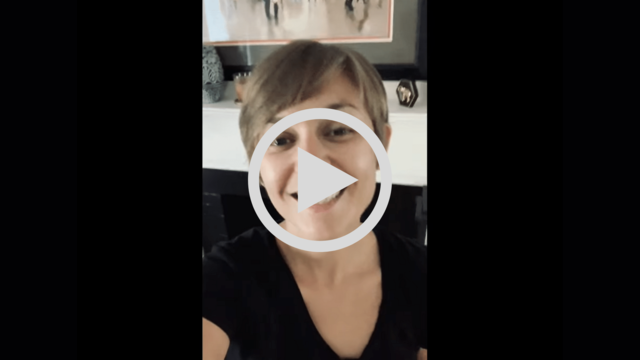What's New > Q&A with Megan Durham
 |
Can you give us a brief overview of your sessions (part 1 and part 2) for the 2021 Virtual Winter Workshop? What can attendees hope to take away?
First of all, thank you for providing an opportunity for me to share about the upcoming session. One of the messy truths about voice care is this: when you work with bodies, you work with trauma. The paradox for voice professionals is that we are not psychotherapists, yet we work with singing bodies. How can we acknowledge this duality and maintain our scope-of practice?
- Part 1 of this workshop session will provide an overview of how trauma affects the body and the efficacy of incorporating present-moment embodiment into voice care. We also will explore how voice professionals can learn to notice cues of “safety” and “danger” in our own bodies so that we can better attune to the non-verbal cues of students.
- Part 2 of this workshop session will examine the trauma-informed principles of safety, trust, peer support, collaboration, choice, and cultural humility, and how we can apply these concepts into voice settings.
Accessible movement, breath, and sound practices will be woven throughout each session. Participants will come away with a basic scaffolding for trauma-informed teaching, as well as several nervous system support practices that they can incorporate into their existing work.
An important note: Trauma-informed voice care does not address the details or “story” behind trauma. We are informed by the impact of traumatic stress on the body-mind-voice, and we observe the singing body that is in front of us. We incorporate nervous system support and embodied singing awareness into existing voice pedagogy modalities, but we do not offer diagnosis or opinion. Share practices, not stories.
Can you give some examples of when you have spotted/first discovered trauma in a student? Are there any common telltale signs?
This is a really interesting question that speaks to our scope-of-practice. As I mentioned above, voice professionals are not qualified to diagnose trauma. Although this workshop will explore some general ways that trauma can manifest in the body, they vary greatly, and may not be obvious. There are times when clients disclose personal information about their journey, and it’s important to hold a sacred space for those lived experiences. Other times, we have no idea what may be going on in someone’s life —but we can learn to observe how their body/nervous system is responding in the moment that we are with them.
Rather than a “technique” or an “if I see A, I do B” method, being trauma-informed describes how we continually hold space in relationships — all relationships. It is honoring the lived experiences of the diverse students that we work with, and acknowledging that the only person in charge of the student’s body/voice is the student. What does it feel like to breathe into the affirmation: No one knows what feels good in my body-voice but me?
Even more than understanding someone else’s physiology or psychology, being a trauma-informed voice practitioner is about observing our own body-mind responses and boundaries in the moment so that we can hold a more supportive space. It’s increasing our capacity to sit with discomfort, uncertainty, and fear, and having tools to navigate those feelings in a session. Can we notice when the defensive aspects of our egos are speaking; when our bodies feel armored against threat; when our “rescuer” mentality is activated, and especially what “no” feels like? We can’t fully honor someone else’s lived experience if we haven’t honored our own. We will spend a lot of time diving into these concepts in the workshop!
Do you have a success story or two of teachers/students who have overcome trauma with your approach?
Incorporating co-regulation and nervous system support into voice pedagogy can be transformative. There are many voice professionals already committed to this kind of work — the numerous benefits include embodied communication and creative connection. However, trauma-informed voice care does not assume to offer healing; it offers informed presence. Healing from trauma is a non-linear journey, so in many cases I’m not sure that the word “overcome” is applicable; although we are amazingly resilient beings. TIVC is not about overcoming trauma and is not a substitute for clinical therapy. In fact, TIVC actually de-emphasizes any particular outcome or benchmark. It’s more about recognizing that a significant number of folks that we work with have experienced traumatic stress or chronic disconnection. Having said that, I think the best words to answer your question are from individuals that I have worked with — I am grateful for their responses:
For a long time, nothing felt safe in my body, especially singing. I didn’t think I would be able to finish my degree or perform again. When I learned how nervous system patterns can impact singing, it felt freeing to realize that my voice wasn’t broken, that I am not broken. In the practice room or in lessons, I have learned how go slowly without feeling overwhelmed by everything that I thought needed to be changed. I feel more connected and creative because I understand that my voice is actually a resource.
N.P., graduate student, voice performance
Trauma-informed voice care has inspired my students and me to embrace a philosophy of mindfulness in our exploration of the Self and the art of singing. Singing has ceased to contain binary objectives, and has become an individualized journey that honors the experience, mood, and desired aesthetic of students over traditions, performance practices, and technical objectives.
-T.S., professional singer, university voice faculty member
As someone with C-PTSD who experiences voice loss due to physical and emotional stress, the trauma-informed approach to voice care has been life-changing. I sing in a church choir and have taken some voice lessons in the past, but I always felt like I was never “doing it correctly,” as it was very difficult for me to feel anything in my body. Sometimes directions about breathing or accessing parts of the body do not feel safe for me. Megan created an environment where I felt comfortable making choices that were right for my voice in the moment. It was never about fixing anything or getting it right — it was about me feeling like I had the power to use my voice in any way that felt accessible.
-A.G., avocational singer
Can you share an example of a resource or mindfulness exercise that demonstrates the kind of content you will share?
I have found the ancient yogic practice of hand mudras, or gestures, to be a wonderful way to connect the external to the internal. We have about 17,000 touch receptors in the hands that send vital feedback messages to the brain. Touch has a powerful impact on how we connect sensory awareness to emotion. From the Sanskrit word “mud,” delight and “rati,” to bring forth, mudras are gestures or attitudes that evoke certain qualities within our being, promoting feelings of wellbeing and safety (for more information, I highly recommend Mudras for Healing and Transformation by Joseph and Lilian LePage.) Let’s practice Adhi Mudra, a gesture of stillness, groundedness, and security. This is a wonderful gesture for singing!

Megan Durham demonstrates Adhi Mudra
- In a comfortable seated or standing position, extend both of your hands so that your palms are facing upward.
- Tuck the thumbs inside of your palms and wrap your fingers around the thumbs (essentially making a fist with the thumbs tucked in).
- Turn your hands to face down.
- Pivot your attention between noticing breath moving in and out through your nose, and your hands. Notice any sensations that arise, and notice your breath without changing it. Observe what this gesture brings in your body — both your external awareness and any internal sensation.
- At any time, you can return to surface of your body, observing your hands or gently squeezing your fingers and thumbs together.
- You might practice this gesture for 8-10 breaths, or even up to 5 minutes — whatever feels most accessible for you in this moment.
- When you feel ready, bring your awareness back to the present moment. Stretch out your palms to release the gesture, and feel your feet press into the floor. Inhale to the crown of your head and affirm, I am; exhale to the soles of the feet, here.
Self-care is one of the overarching themes for this year’s Winter Workshop. How do you define “self-care”?
For me, self-care practices are internal and external resources that bring us back into a window of capacity to cope. These tools are not necessarily to “calm us down”…but to allow us to take the next step — whatever that may be! ‘Calm’ may not be available to us, and it may not be what is required in this moment. It is also critical to recognize that not everyone has equitable access to self-care resources. Because we heal though connection, community-care and environmental care are equally vital. We cannot fully care for ourselves when our neighbors suffer constant disconnection — particularly as a result of oppressive systems. So, I think I’d simply say: Rest. Find the ground. Take a step. Reach out with compassion.
Anything else you would like to add?
I can’t wait to share “virtual space” with you in January! If you’d like to get a little more background information about this work, check out my Instagram page, @respirevocalwellness. Please receive what resonates with you, and leave what does not!
Watch a preview of Megan Durham’s session below.
Learn more and register for the 2021 Winter Workshop today. Read more about Megan Durham.


